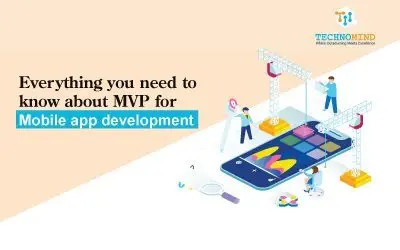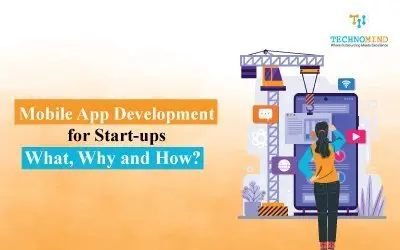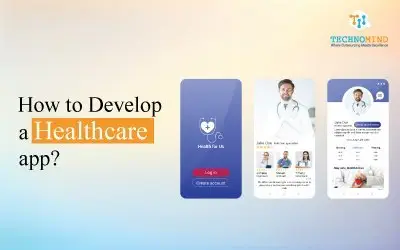Blog
How To Develop On-Demand Food Delivery App Like Zomato?
The food delivery industry has experienced rapid expansion in recent years, and a large number of businesses have joined the market to fight for market share. A well-known company among them is Zomato, which has established itself in the market by providing its clients with high-quality services. Focus on the essential elements that set Zomato apart from the competition if you want to build an on-demand meal delivery app similar to Zomato.
We will go over the essential elements, technology, and procedures needed to create an on-demand food delivery app similar to Zomato in this blog article.
Why You Should Develop an On-demand Food Delivery App?
For business owners and companies in the food industry, creating an on-demand food delivery app might be a lucrative venture. More and more individuals are using on-demand food delivery services to order their meals as a result of the growing desire for convenience and the development of technology.
You can take advantage of this expanding market and give users a flawless and practical food delivery experience by creating an on-demand food delivery app. Also, by reaching out to new clients and boosting your revenue streams, an on-demand food delivery app can assist you in growing your company. Creating an on-demand food delivery app can be a wise investment for companies seeking to expand in the food sector if it has the correct features and marketing tactics.
Key Features To Look For While Developing On-Demand Food Delivery App
There are a few crucial elements that you should think about if you’re intending to create an on-demand food delivery app to make sure that it offers a flawless user experience. The following are some of the most important qualities to consider while creating an app for on-demand food delivery:
Unique and User-Friendly Interface
Any on-demand food delivery app must have a user-friendly UI. The app should be simple to use and allow users to rapidly search for restaurants and cuisine. Moreover, the interface has to provide filters that enable users to look for particular cuisines, restaurants, and culinary items.
Geolocation
An essential component of on-demand meal delivery apps is geolocation. The app should be able to locate the user and show them delivery-friendly eateries in the area. Users can utilize this feature to find nearby eateries that offer speedy delivery of food.
Live Monitoring
Any app for on-demand food delivery must have real-time tracking. Customers should be able to check the app’s status to see when their food will arrive at their doorstep from the restaurant. Users may better manage their time and receive their food hot and fresh thanks to this function.
Menu and Restaurant Details
Apps for on-demand meal delivery should give consumers comprehensive restaurant information, including menus, reviews, and ratings. Users can use this information to decide where to order food in an informed manner.
In-App Messaging
On-demand meal delivery applications often have a beneficial feature called in-app messaging. It enables customers to get in touch with restaurants to discuss their orders, delivery windows, and other specifics. Users may quickly and effectively rectify any issues with their orders with this tool.
Push Notifications
Any app for on-demand food delivery must have push notifications. These enable users to get updates on the status of their orders, delivery estimates, and other crucial information. Moreover, push alerts to encourage users to use the app more frequently and place more orders.
Multiple Payment Options
Apps that provide food on demand should allow a variety of payment methods, such as credit/debit cards, net banking, and digital wallets. Users may easily pay for their orders with the help of this function, which also guarantees a smooth payment process.
Contactless Delivery
Contactless delivery has been a crucial component of on-demand food delivery apps since the COVID-19 outbreak. The risk of infection is reduced because users can order food without coming into contact with restaurant staff or delivery drivers.
Order History
Users can easily reorder their favorite foods by using an order history tool to keep track of their prior orders. Those who use this tool can better track their spending and create appropriate budgets.
Loyalty Programs
The implementation of loyalty programs in on-demand food delivery apps helps to keep users engaged. These initiatives encourage customers to keep utilizing the app for their meal delivery requirements by rewarding them for placing orders through it.
Steps to Develop On-Demand Food Delivery App
Even though creating an on-demand food delivery service can be a challenging task, breaking it down into manageable chunks can help. The steps to take when creating an app for on-demand food delivery are as follows:
Conduct Market Research
To determine your target market, competitors, and market trends, it’s crucial to undertake in-depth market research before you begin constructing your app. This will assist you in creating a plan that appeals to your target market’s needs and distinguishes you from your rivals.
Define the Unique Features of Your App
Determine the characteristics your app must have to satisfy the needs of your target audience based on your market research. Geolocation, real-time tracking, a variety of payment methods, and loyalty programs are a few examples of these characteristics.
Choose the Appropriate Development Team
The success of your app depends on selecting the best development team. Consider hiring a group that has experience creating on-demand food delivery apps and can give you a portfolio of their prior work.
Develop a Working Prototype
Create a prototype of your app to evaluate its usability and usefulness. You can use this to find any flaws or problems that need to be fixed before the app is released.
Design the User Interface
Create a user interface that is simple to use and pleasant to the eye. The user interface should be simple to use and offer people a comfortable and engaging experience.
Integrate Payment Gateway and Delivery Systems
Incorporate many delivery methods and payment options into your app to provide users with a seamless experience. Users will be able to conveniently track their deliveries and pay for their orders thanks to this.
Conduct Quality Assurance And Testing
To find any problems and make sure your program works properly, test it thoroughly. To guarantee that your app fulfills both your requirements and those of your users, conduct quality assurance
Launch Your App
Launch your software on the app stores after testing and quality assurance are finished. Create a marketing plan to advertise your software and get users.
Maintain And Provide Ongoing Technical Support
To ensure that your app remains functional and satisfies your users’ demands, offer regular support and maintenance. Bugs may be fixed, new functionality may be added, and the user interface may be updated.
Technology Stacks Required to Develop On-Demand Food Delivery App
Developing an on-demand food delivery app requires a variety of technologies and programming languages to create a seamless and efficient user experience. Here are the technology stacks required to develop an on-demand food delivery app:
Front-end Technologies
The front end of the app is the user interface that users interact with. Front-end technologies include HTML, CSS, and JavaScript. These technologies are used to create the user interface and ensure that the app is responsive and easy to navigate.
Back-end Technologies
The back end of the app is the server side of the application that powers the functionality of the app. Back-end technologies include programming languages like PHP, Python, and Node.js. These technologies are used to develop the app’s logic, manage data, and perform necessary computations.
Database Management Systems
Database management systems (DBMS) are used to manage the data for the app. Popular DBMS for on-demand food delivery apps including MySQL, MongoDB, and PostgreSQL. These DBMS are used to store and manage user data, order history, menu items, and more.
Cloud Storage and Hosting
Cloud storage and hosting services are used to store the app’s data and host the app. Popular cloud storage and hosting services include Amazon Web Services (AWS), Microsoft Azure, and Google Cloud Platform. These services provide secure, scalable, and reliable storage and hosting for the app.
APIs and SDKs
APIs and SDKs are used to integrate third-party services and functionalities into the app. Popular APIs and SDKs for on-demand food delivery apps include Google Maps API, Stripe SDK, and Twilio SDK. These APIs and SDKs are used to provide features such as real-time tracking, multiple payment options, and SMS notifications.
Real-time Communication
Real-time communication technologies such as WebSocket, WebRTC, and Pusher are used to enable real-time communication between the app and its users. These technologies are used to provide real-time updates and notifications to users, such as order confirmations and delivery updates.
How Much Does it Cost to Develop an On-Demand Food Delivery App Like Zomato?
An on-demand food delivery platform like Zomato can range significantly in price depending on the features, complexity, rates of the development team, and location.
One of the major expenses in creating an on-demand food delivery service is the cost of the development team. Project managers, designers, developers, and quality assurance testers are typically on the team. Depending on their level of experience, where they are located, and their hourly rates, the development team’s cost may change.
For instance, the hourly pricing for a team of US-based developers can range from $100 to $200. The hourly pricing can be between $20 and $50 if you hire an Indian team of developers.
Concluding Note:
A skilled development team, meticulous planning, and smart decision-making are necessary when creating an on-demand food delivery app like Zomato. You may develop an app that caters to the requirements of both your clients and your company by following the steps indicated in this blog, which include market research, choosing the appropriate technology stacks, and implementing necessary features.
It’s crucial to take into account the long-term advantages of having an on-demand food delivery app, like higher income, client loyalty, and competitive advantage, even though the cost of development can vary. You can create an on-demand food delivery app that offers a smooth and effective user experience, helps your business expand, and does it with the proper team and methodology.
Everything you need to know about MVP for Mobile app development
Every business nowadays want to expand their reach in digital world and doing that in a better way, one of the good option is to…
Mobile App Development for Start-ups – What, Why and How?
Mobile applications are becoming more and more essential to the expansion and success of organizations, especially startups. Since…
How to Develop a Healthcare app?
Can you imagine a world where healthcare services are just a tap away on your smartphone? As technology continues to revolutionize various…





0 Comments